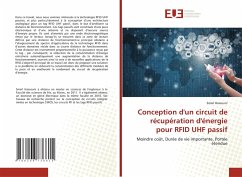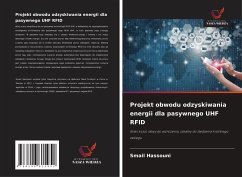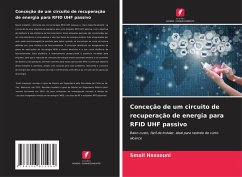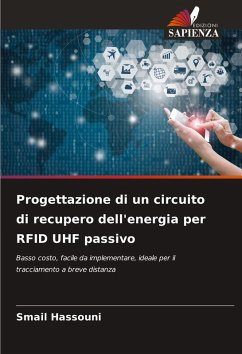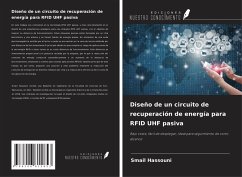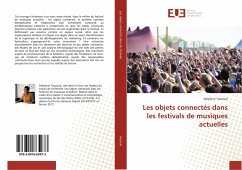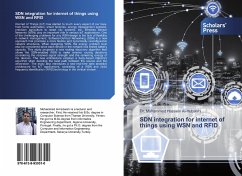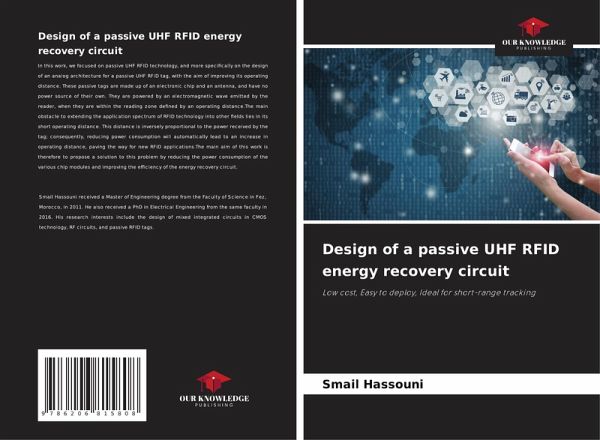
Design of a passive UHF RFID energy recovery circuit
Low cost, Easy to deploy, Ideal for short-range tracking
Versandkostenfrei!
Versandfertig in 6-10 Tagen
29,99 €
inkl. MwSt.

PAYBACK Punkte
15 °P sammeln!
In this work, we focused on passive UHF RFID technology, and more specifically on the design of an analog architecture for a passive UHF RFID tag, with the aim of improving its operating distance. These passive tags are made up of an electronic chip and an antenna, and have no power source of their own. They are powered by an electromagnetic wave emitted by the reader, when they are within the reading zone defined by an operating distance.The main obstacle to extending the application spectrum of RFID technology into other fields lies in its short operating distance. This distance is inversely...
In this work, we focused on passive UHF RFID technology, and more specifically on the design of an analog architecture for a passive UHF RFID tag, with the aim of improving its operating distance. These passive tags are made up of an electronic chip and an antenna, and have no power source of their own. They are powered by an electromagnetic wave emitted by the reader, when they are within the reading zone defined by an operating distance.The main obstacle to extending the application spectrum of RFID technology into other fields lies in its short operating distance. This distance is inversely proportional to the power received by the tag; consequently, reducing power consumption will automatically lead to an increase in operating distance, paving the way for new RFID applications.The main aim of this work is therefore to propose a solution to this problem by reducing the power consumption of the various chip modules and improving the efficiency of the energy recovery circuit.



